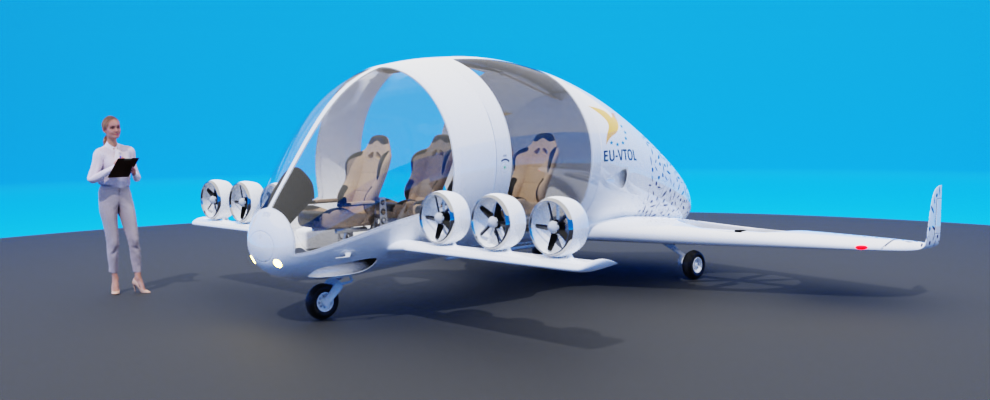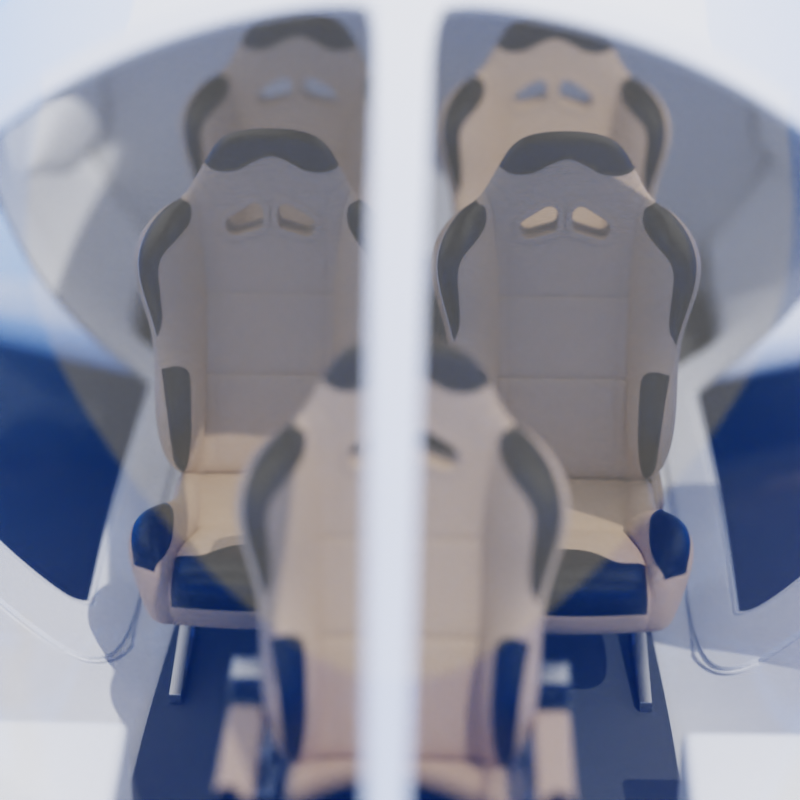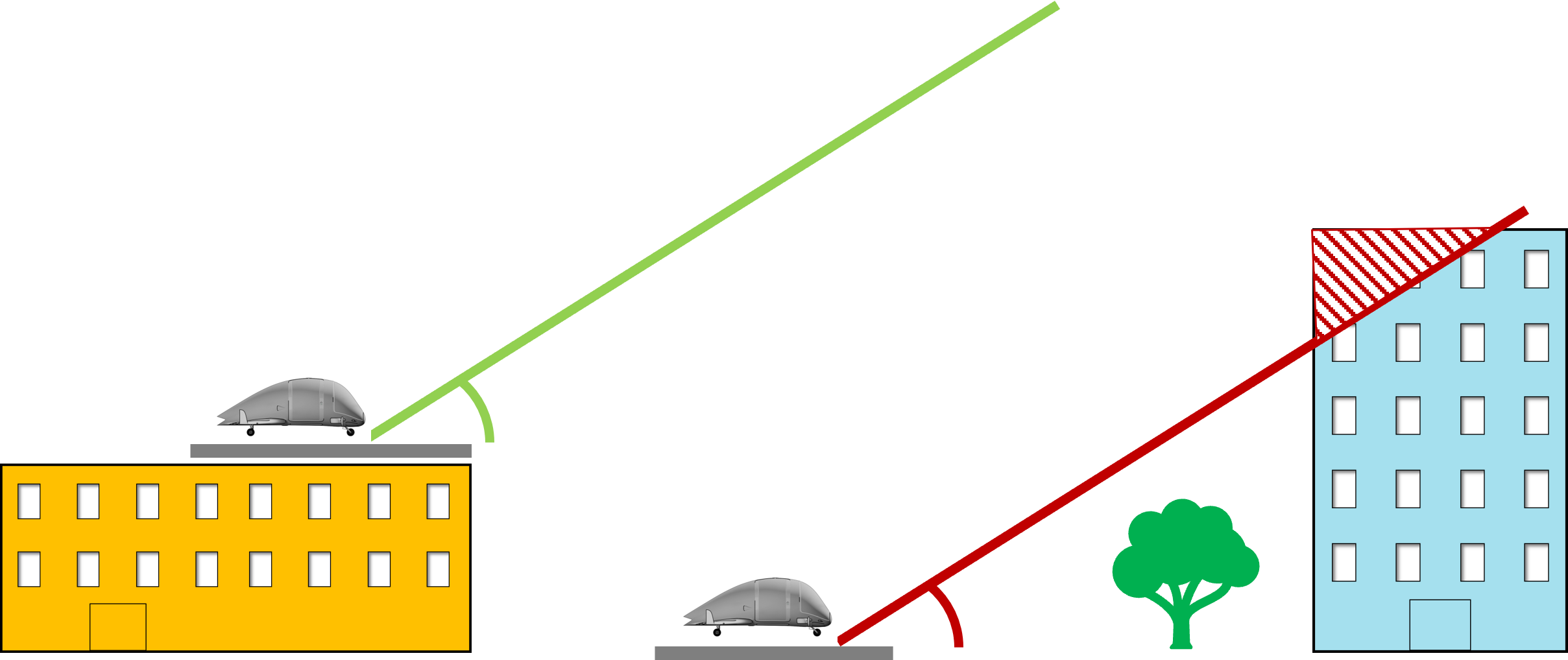All of us could soon encounter new aircraft types in our urban skies and Vertical Take-Off and Landing aircraft (VTOLs) will become a familiar sight. With citizens’ safety and wellbeing at the very heart of EASA’s work, VTOLs need to have a special design and tailored safety features and rules / guidelines to ensure safety in the air and on the ground.
This article will highlight the main features of a VTOL and illustrate the way VTOLs are going to be designed and shaped, the safety features that will be in place and the environmental aspects that are to be kept in mind.
How we got here & how we got ready!
Opening our skies to VTOLs has taken years of preparation in research and product design. Further consultations with industry, aviation stakeholders and of course, a dialogue with EU citizens will take place over the coming years.
Experts from research, academia, aviation authorities and industry, as well as other interested individuals regularly met to discuss the safest, most environmentally appropriate and viable way to open the urban skies for transport.
EASA carried out a study on Urban Air Mobility over a period of six months from November 2020 until May 2021. It included thorough research, literature review, urban market analysis, a quantitative survey, a qualitative survey and a detailed noise test. Around 4000 residents from 6 major cities / regions were consulted.
- Take a look at our EASA Light article ‘Urban Air Mobility’ for all details.
On board the VTOL – specifications in a nutshell
The specifications and the approach to get VTOLs flying will be detailed and concentrate on the safety and sustainability of VTOLs in view of the type of operations and the effect VTOLs will have on citizens. We already introduced some of the specifications in our article ‘Vertical Take-off and Landing (VTOL)’.
The main reference points for the specifications are:
- Redundant propulsion and systems, meaning several systems are in place to increase reliability.
- Capable of landing or taking-off vertically to enable new operations in busy urban settings / environments with limited space
- Fail-safe systems and structures, to increase safety in case of failures.
- Piloted VTOLS first, this will ensure that we can gather experience during flights with a pilot on board, collect data and can prepare for autonomous VTOLs once we have an established safety record.
Futuristic & safe designs shaping our urban skies
Looks are important, but safety is driving designs and specifications and determines what will be acceptable. That said, design and safety co-exist quite well together and there are many design ideas that will be appealing and safe at the same time.
EASA has its own ‘virtual’ VTOL, the EU VTOL! You will come across the EU VTOL in many of our articles and information to explain design aspects and bring safety requirements and specifications into perspective.
There will be a large number of shapes and designs for VTOLs, but some features will form the basic requirements. So, our EU VTOL is not for real, and will never be built – but we believe it would be good to fly!

Motors and rotors
 The number of motors and rotors are the feature that distinguishes a VTOL from a Helicopter (or more broadly speaking a Rotorcraft) that can also take-off and land vertically.
The number of motors and rotors are the feature that distinguishes a VTOL from a Helicopter (or more broadly speaking a Rotorcraft) that can also take-off and land vertically.
VTOLs will have a larger number of motors and rotors to optimise performance and provide redundancy for safety, which means that there are always more motors and rotors onboard needed to perform the flight as a fallback in case of possible emergencies.
An additional number of rotors adds another potential benefit for some designs as you can operate more rotors at a lower blade tip speed, providing the same lift or thrust but generating less overall noise.
The multiple motors and rotors are usually distributed around the VTOL so that the forces that could create rotation of fuselage are cancelled out. As a result, most VTOLs do not need a tail rotor like conventional helicopters.
Comfort and safety for pilot & passengers
 Although VTOLs intend to become fully autonomous at some stage, the first VTOLs that will allow for passenger transport of sorts will have a pilot on board. Once safety records for such flights are available and ready to be analysed, flights without a pilot on board can be looked at.
Although VTOLs intend to become fully autonomous at some stage, the first VTOLs that will allow for passenger transport of sorts will have a pilot on board. Once safety records for such flights are available and ready to be analysed, flights without a pilot on board can be looked at.
For the time being, we will look at VTOLs that have passenger cabins shared by a pilot and passengers.
Take a look at some of the features and see what it will be like onboard a VTOL.
The initial technical rules for VTOLs are intended for a maximum of 9 passengers & 1 or 2 pilots. The cabin is not pressurized as most flights will take place at low altitude and in such case oxygen masks are not necessary.
Safety belts are a must and need to be worn by passengers and the pilot when required for safety. Depending on the route for the flight, life jackets, life rafts and additional safety equipment will be on board and the VTOL will have to follow additional sets of certification requirements.
 Flight paths, take-off and landing profiles and performance objectives will play a major role for safety.
Flight paths, take-off and landing profiles and performance objectives will play a major role for safety.
- Take a look at our article ‘Vertiports in the Urban Environment’ for more details.
Batteries that keep us flying (safety in numbers)
 Most VTOLs have planned to use batteries as their main power source. One of the many safety requirements will state that more batteries than needed will be onboard a VTOL to ensure that power supply is guaranteed, even in case of failures.
Most VTOLs have planned to use batteries as their main power source. One of the many safety requirements will state that more batteries than needed will be onboard a VTOL to ensure that power supply is guaranteed, even in case of failures.
Specifications will not be limited to one kind of energy. This will ensure that specifications, rules and requirements are future proof and can be adapted to keep pace with coming changes in technologies.
Materials, light but hard to break
 VTOLs need to look after their weight! Using materials that are light and durable is key.
VTOLs need to look after their weight! Using materials that are light and durable is key.
In general, materials used in the production of VTOLs are undergoing several tests before they can even be considered to come anywhere near passengers.
In particular, they need to maintain their properties throughout the environmental and operational conditions for which the VTOL is certified.
Windows big & beautiful
 Windows are another eye catcher in many of the VTOL designs that we have seen so far.
Windows are another eye catcher in many of the VTOL designs that we have seen so far.
With pilots having to be aware of obstacles and other urban sky operators during all phases of the flight, having big windows that help with visual screening that is essential for pilots and passenger safety.
And of course, passengers will be able to enjoy their flight even more and see urban areas from a different perspective.
Flight controls for piloted VTOLs
Although one of the industry future goals is to make use of autonomous VTOLs, the first VTOLs that we will encounter will still have a pilot on board to fly the VTOL and first collect data on operations. This will enable us to evaluate that specifications are safe, sufficient, appropriate and user friendly.
Having multiple motors and rotors requires advanced flight controls, with computers helping the pilot to command the motors. This provides an opportunity to also facilitate the task of flying the VTOL.
Stay informed and up to date – follow EASA Light
EASA will share all the latest information on VTOLs, vertiports and developments relevant for citizens and passengers. Take a look at our articles on VTOLs, drones and other areas on EASA Light.
Create an account and follow us on EASA Light to stay up to date!
